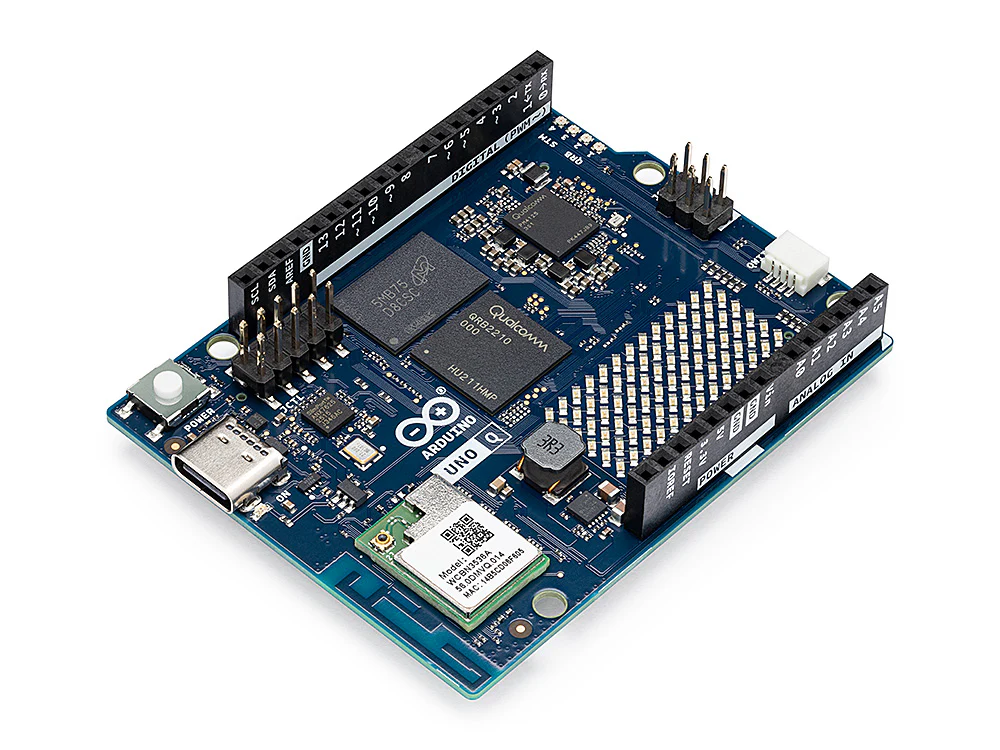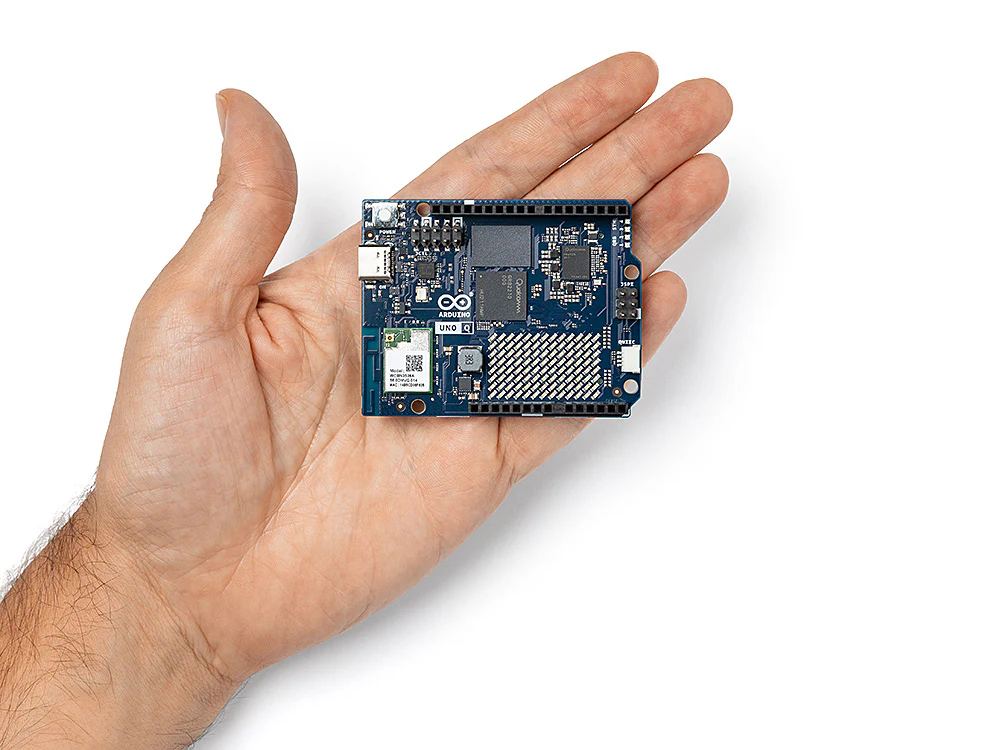

Qualcomm buys Arduino and presents its own mini PC
Chip manufacturer Qualcomm takes over the open source electronics platform Arduino. It is to remain independent and is presenting its first development board with a Qualcomm chipset, the Uno Q.
Arduino is the lesser-known competitor to Raspberry. The open source platform from Italy offers affordable hardware that can be used to realise your own electronics projects. The Uno Q complements the range with a single-board computer with a Dragonwing processor from Qualcomm.

Arduino to remain independent
It is not known how much Qualcomm paid for Arduino. However, in the official announcement of the takeover, the chip manufacturer makes it clear that Arduino will remain independent as a brand with its mission and tools. Processors from other manufacturers would continue to be used on Arduino hardware.
Qualcomm, for its part, hopes that the takeover will provide new impetus for its own products and wants to offer developers new tools. The 33 million active users of Arduino will thus gain access to Qualcomm technologies. The new «Arduino App Lap» is a new development environment designed to simplify the use of Arduino across Linux, Python and AI and allows, for example, the creation of customised apps from a construction kit.
Uno Q: first Arduino board with Qualcomm chipset
The Uno Q is the first Arduino board with a Qualcomm chipset: the Dragonwing QRB2210. The small single-board computer is based on a so-called «dual brain» architecture consisting of a Debian-capable microprocessor and real-time microcontroller. These are the Dragonwing with its four 2.0 gigahertz computing cores and an STM32U585 MCU.

Source: Arduino
Debian OS is pre-installed on the Uno Q. However, you can also code with it directly in Python. The aforementioned Arduino App Lap makes it quick and easy to switch between environments. Small AI models are also already on board.
On the hardware side, the Uno Q has two gigabytes of RAM and 16 gigabytes of built-in eMMC memory. Unlike the Raspberry, no memory card is required. Wireless connections are possible via Wi-Fi 5 and Bluetooth 5.1. There is a USB-C port for cable connections, which is also responsible for the power supply and outputs video signals to a screen. A mouse, keyboard, microphone or camera can be connected via a dongle. Modulino expansions can be connected via the Qwiic connector and the classic Uno form factor ensures compatibility in the Shield ecosystem with other Uno boards.

Source: Arduino
The Uno Q costs 47.60 euros and is therefore more expensive than theUno R4 WiFiBoard with less power. Availability here is still unclear. The manufacturer accepts pre-orders directly on its homepage.
As a primary school pupil, I used to sit in a friend's living room with many of my classmates to play the Super NES. Now I get my hands on the latest technology and test it for you. In recent years at Curved, Computer Bild and Netzwelt, now at Digitec and Galaxus.
From the latest iPhone to the return of 80s fashion. The editorial team will help you make sense of it all.
Show all